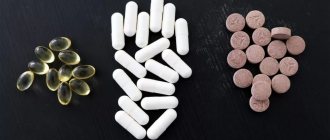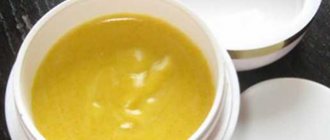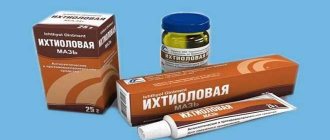Sulfur is one of the most important microelements for humans; it is responsible for the good appearance of nail plates, strands, and skin. This element is present in medicinal and cosmetic preparations; a properly formulated diet will help to avoid deficiency.
Sulfur is an important element for the human body
What is sulfur and its role in the body
Sulfur, S (full name sulfur), is a macroelement assigned atomic number 16 in the periodic table.
This substance, known for its fetid odor in compounds and flammable properties, plays an important role in humans, being part of amino acids such as methonine, cystine, vitamins (for example, thiamine), hormones and enzymes (for example, insulin).
In the human body, the proportion of sulfur is 0.25% of the total mass.
Sulfur itself is not toxic, but compounds of the element with other chemical components, such as hydrogen sulfide, are poisonous.
It plays a key role in blood clotting. Its beneficial properties include protecting protoplasm from bacteria.
As part of the body's compounds, sulfur has benefits for the growth of hair, nails, skin, and also in protecting the body from aging.
Where is it used?
Pharmacy sulfur is used to treat various diseases; medicines based on this trace element can quickly eliminate the manifestations of articular and dermatological pathologies.
What does sulfur help with:
- allergies and dermatological diseases;
- bronchial asthma;
- arthritis, scoliosis, bursitis, osteoarthritis, myositis, sprains;
- convulsions;
- as an anti-inflammatory and analgesic;
- to strengthen the immune system, speedy recovery after long-term illnesses;
- to reduce the body's need for insulin in diabetes mellitus.
In cosmetology, products with sulfur are used to prevent early aging, improve the appearance of the skin, give strength and shine to hair, and strengthen nail plates.
For external medicinal preparations, precipitated (purified, combustible) sulfur is used; it is part of sulfur ointment, which is prescribed for the treatment of scabies, seborrhea, and psoriasis. In combination with lanolin, petroleum jelly, and stearic acid, the microelement has an anthelmintic, exfoliating and anti-inflammatory effect - such drugs are prescribed to eliminate rosacea and scalp lesions.
Purified sulfur in the form of tablets is used in the treatment of enterobiasis, constipation, and as an external remedy for the treatment of dermatological pathologies. In the form of a yellow powder, the product is used in folk and traditional medicine; it can be used internally and in the preparation of medicines.
Homeopathic sulfur has a weak therapeutic effect; it is produced in the form of granules; the drug must be taken for a long time under the supervision of a specialist.
Sulfur is useful not only for people, but also for animals - the feed product is included in vitamins for animals. This microelement is also used to enrich fertilizers in agriculture, in the production of steel and rubber, explosives, and pyrotechnics.
Useful properties of sulfur
Sulfur has a number of useful properties:
- maintains a sufficient amount of bile in the body for digestion;
- protects against exposure to radiation and any other radiation from electrical appliances;
- supports collagen synthesis;
- causes an even and lasting tan of the skin in summer;
- present in hemoglobin, participating in the process of transporting oxygen through the blood to the tissues and cells of the body.
Important!
The daily human need for sulfur is 3 grams. The benefits of sulfur for a woman’s body are manifested in protection from environmental harm and stress factors. It improves immunity and general condition of the body. The microelement prevents the appearance of wrinkles, makes the skin elastic and firm.
In addition to the listed beneficial properties, the element cleanses the blood and activates brain functions.
In addition to its presence in the body as one of the components responsible for its activity, the benefits of sulfur are also manifested in the treatment of certain diseases.
Physiological action
It would seem, what could be the benefit for our health from a flammable substance, many of whose compounds have an unpleasant odor and have a suffocating effect. But sulfur is a macronutrient, and its content in the body of an adult is about 140 g. Only two other macroelements – calcium and phosphorus – are higher.
This substance in our body is not ballast at all. After all, Nature does nothing in vain, every step is thought out, and every element plays its role. But what is the role of sulfur? None. Then what positive effects does it have? All.
This paradox is only apparent. Yes, by itself, taken in its pure form, it may not be beneficial. But in connections it manifests itself in all its glory.
It is enough to mention sulfhydryl groups. These groups (thiol groups, SH groups) are formed by residues of the amino acid cystine.
This is a proteinogenic amino acid, i.e., one that is part of proteins. Sulfhydryl groups, as the name and designation suggest, consist of hydrogen and sulfur atoms.
Two adjacent SH groups form the so-called. disulfide bridges or disulfide groups (SS groups), consisting of two sulfur atoms.
These disulfide groups form the structure of proteins. Each protein is essentially a polypeptide - a combination of a large number of peptides formed by amino acid residues. The sequence of peptides in a chain is the primary structure.
The chain is spirally twisted - this is the secondary structure. A spirally twisted chain can take various forms (thread, ball) - this is a tertiary structure. Finally, the molecules of a number of proteins can be formed not by one, but by several polypeptide chains, which are connected to each other in strictly defined places. This is the quaternary structure of a protein.
Tertiary and quaternary structures determine the spatial configuration or conformation of a protein molecule. The properties of a protein depend on its conformation.
Under the influence of temperature, chemical compounds, and other factors, the tertiary and quaternary structures are disrupted. This process is called protein denaturation. Denatured protein loses its properties.
Sulfur in the composition of sulfhydryl groups and disulfide bridges forms a kind of rigid frame that helps the protein molecule maintain conformation. Thanks to this, the protein retains its properties.
It is known that enzymes, these catalysts of biochemical reactions, are proteins. Therefore, sulfur helps enzymes maintain their activity. And indeed it is. Under the influence of damaging factors, disulfide bridges are destroyed and the enzyme is inactivated.
Enzymes are not entirely proteins. They contain a non-protein part, a coenzyme. Vitamins, vitamin-like substances, other organic compounds, and even metals (metal enzymes) can act as coenzymes. Sulfhydryl groups provide the connection between the apoenzyme (the white component of the enzyme) and the coenzyme.
Its value is not limited to the formation of sulfhydryl groups and disulfide bridges. It is part of many other biologically active substances. In addition to the aforementioned cysteine and its derivative cystine, sulfur-containing amino acids include tauirne and methionine.
Taurine is a component of taurocholic acid, one of the bile components. A methionine derivative, S-Methylmethionine, better known as vit. U, has an anti-ulcerogenic effect - prevents the development of gastric and duodenal ulcers.
Some other vitamins also contain sulfur: Vit B1 (Thiamin), Vit. B7 (Biotin), and Vit. B9 (Folic acid). Sulfur is part of the plasma proteins albumin and hemoglobin in the blood. Insulin, pepsin, collagen, keratin, oxytocin, lysozyme - this is not a complete list of hormones and other biologically active compounds that contain sulfur.
As part of these compounds, S regulates the function of organ systems and affects vital processes:
The cardiovascular system
- normalizes blood pressure (BP) and prevents the development of hypertension
- strengthens vascular walls
- prevents the development of vascular atherosclerosis
- increases the strength of heart contractions.
Blood
- stimulates red blood cell synthesis
- as part of hemoglobin, it transports oxygen and carbon dioxide
- normalizes blood clotting
- prevents pathological thrombus formation.
Respiratory system
- prevents bronchospasm
- improves gas exchange in the pulmonary alveoli.
Digestive system
- participates in the neutralization of toxins by the liver and their subsequent excretion with bile through the intestines
- strengthens the mucous membranes of the gastrointestinal tract (gastrointestinal tract)
- prevents the development of inflammatory processes and ulceration
- emulsifies fats and improves their absorption in the small intestine
- facilitates the absorption of other nutrients (nutrients) in the gastrointestinal tract
- improves gastrointestinal motility
- has a positive effect on the state of the physiological intestinal microflora that synthesizes B vitamins
- improves gastrointestinal motility, promotes the formation of feces.
Nervous system
- improves cerebral blood flow, prevents the formation of blood clots in cerebral vessels
- has a positive effect on the emotional-volitional sphere
- improves thinking and memory
- normalizes sleep
- slows down age-related degenerative changes leading to Alzheimer's disease
- has an anticonvulsant effect.
Musculoskeletal system
- increases muscle strength and endurance
- strengthens the ligamentous apparatus, bones, articular ligaments
- reduces the intensity of joint and muscle pain
- reduces the risk of bone fractures, and in case of existing fractures, accelerates the healing of bone fragments
- prevents the development of arthritis.
Skin and appendages
- increases skin strength and elasticity
- acts in a similar way on hair, preventing hair loss
- Composed of melanin, it protects the skin from the damaging effects of sun rays
- accelerates the healing of skin wounds
- slows down the natural aging process with the appearance of wrinkles, stretch marks, and age spots.
Genitourinary system
- along with other factors, regulates the processes of filtration and reabsorption (reabsorption) in the renal tubules with the formation of urine
- promotes the removal of toxic substances and metabolic products in the urine
- prevents the appearance of tissue edema
- ensures spermatogenesis in men, ovulation in women, normalizes the menstrual cycle
- during childbirth, the composition of oxytocin increases the contractile activity of the uterus, prevents the development of bleeding during childbirth and in the postpartum period
- forms libido in both sexes.
Metabolism
- as part of enzymes and hormones, it participates in all types of metabolism: protein, carbohydrate, fat (lipid), and water-salt
- regulates anabolism and catabolism (synthesis and breakdown) of proteins
- prevents obesity and diabetes
- normalizes acid-base balance
- prevents excessive acidification (acidosis) and alkalization (alkalosis) in tissues during various pathological processes.
Other effects
Sulfur is included in the composition of immunoglobulin antibodies, which provide specific humoral immunity against pathogenic bacteria, viruses, and fungi. In addition, it is part of lysozyme.
This enzyme in the human body also destroys pathogenic bacteria. S is included in many antioxidant systems. It inhibits free radical oxidation, during which cell membranes are damaged.
Thanks to this macroelement, damaged cell membranes are restored. It reduces the severity of inflammatory reactions with pain and fever. It inhibits all 3 phases of inflammation:
- alteration (damage)
- exudation (appearance of liquid effusion)
- proliferation (pathological cell growth).
S increases the body's resistance to ionizing radiation and reduces the risk of malignant tumors. In general, sulfur combines all the positive features of the enzymes, amino acids, and vitamins that it contains.
Daily requirement
The adult body needs 0.5-1.2 g of sulfur for normal functioning. Although some believe that the need for this macronutrient is much higher. They give figures of 3-4 g, and even 4-5 g.
Probably a lot depends on your health and lifestyle. Intense sports, physical activity, recovery from serious illnesses and fractures, pregnancy - all this increases the need for S.
Causes and signs of deficiency
There are no specific reasons that lead only to sulfur deficiency. The deficiency of this macronutrient may be associated with a small amount of sulfur-containing amino acids. Some of them, in particular methionine, are essential for us and enter the body only as part of food.
But a lack of methionine by itself is unlikely to lead to a decrease in sulfur levels in the body. After all, this macronutrient is present in many animal and plant foods, and its deficiency can only be caused by complete starvation or severe restrictive diets.
Other reasons include:
- serious illnesses
- increased physical activity
- gastrointestinal diseases, dysbacteriosis
- pregnancy
- congenital deficiency of certain enzymes responsible for the absorption of sulfur-containing products.
Signs of deficiency are as nonspecific as its causes. Patients may complain of general weakness and low performance. This is also facilitated by a decrease in muscle tone and strength. On the part of the musculoskeletal system, osteoporosis, frequent arthrosis and arthritis are noted.
The risk of cardiovascular diseases (hypertension, atherosclerosis), obesity, diabetes mellitus, and cancer increases. Due to low immunity, susceptibility to infections appears. As a result of digestive disorders, the absorption of other nutrients deteriorates. Children are stunted in growth and development.
Application of sulfur
Sulfur has been used to treat humans since ancient times. Modern medicine uses a number of medicines containing this element and its compounds. For example:
- natural hydrogen sulfide baths have a beneficial effect on the body;
- sodium thiosulfate solution is used to treat scabies, neuralgia, arthritis;
- streptocide and phthalazole serve as antiseptic drugs.
Sulfur is used to produce medicinal soap, which has an antiseptic and drying effect. Purified, or medical, sulfur is used to fight parasites, intestinal diseases and frequent constipation.
Sulfur is used to treat eczema, furunculosis and demodicosis. Hair and anti-dandruff masks are made from it: the element acts as a hair growth stimulator and also eliminates oiliness.
Advice! Doctors recommend therapy using sulfur two to three times a year.
How to use sulfur
Sulfur-containing drugs are taken simultaneously with food.
You should only buy purified sulfur from the pharmacy.
Feed sulfur preparations for animals are not intended for human consumption.
The optimal course of treatment would be 1 month. If there is no expected benefit, you should stop taking it until you consult your doctor.
Important! Sulfur is used as prescribed by a doctor in the recommended dosage. Self-administration and prescription of the drug is not recommended.
Recommended reading: Benefits of goat cheese
Sulfur powder for oral administration
Powder for internal use is prescribed for chronic diseases:
- polyarthritis;
- sciatica;
- haemorrhoids.
Sulfur for oral administration is purified and comes in tightly sealed jars. Taking purified sulfur is also prescribed for the treatment of enterobiasis.
Medical purified sulfur, or sulfuric anhydride, is beneficial in cases of:
- restoration of the body's defenses;
- for expectorant purposes: hydrogen sulfide is absorbed through the intestines and enters the lungs through the blood;
- for constipation, purified sublimated sulfur is prescribed;
- to enhance the body’s ability to neutralize weak poisons.
When taking sulfur, you can drink enterosorbents if you wish: they will reduce the harm of frequent gas formation that the drug can cause.
Sulfuric ointment
In addition to oral administration, medical purified sulfur is used externally in the form of ointments to treat:
- scabies;
- eczema;
- dermatitis;
- depriving;
- acne.
For dermatitis, medicinal sulfur ointment is recommended to be applied twice a day. The sulfur concentration in the preparation is 5%.
The sulfur concentration in acne ointment is 33%. It is applied to clean skin and dry skin. It is advisable to do the procedure in the evening and not rinse off immediately after applying the product.
During treatment of scabies, do not wash off the ointment from the skin. You should also not shower during therapy. Only after a 5-day course of treatment should you wash everything off thoroughly and put on clean clothes. Bed linen also needs to be changed.
Attention! Sulfur ointment smells unpleasant and leaves greasy marks.
Products containing sulfur
Many organic products contain this useful element. Their daily use can bring benefits comparable to taking sulfur powder orally:
We recommend reading: The benefits and harms of leeks
- bulb onions;
- peas;
- a pineapple;
- zucchini;
- tomatoes;
- turnip;
- watermelon;
- nuts.
Recommended reading: Benefits of pineapple
Quail and chicken eggs contain the largest amount of the element.
There are also useful organic sulfur supplements on the market, such as chewable Siberian larch gum.
Interaction with other substances
The “opponents” of sulfur are Selenium, Barium, and also heavy metals – molybdenum and lead, Mo.
For better absorption of sulfur, the following products will help:
- fish;
- honey;
- bran;
- pumpkin;
- oatmeal;
- peas;
- poultry and rabbit meat;
- Rye bread;
- buckwheat.
Symptoms of lack of sulfur in the body
If the body lacks an element, a person’s immunity decreases, which is manifested by a decrease in vitality, lethargy and fatigue. Disturbances in the functioning of the body are reflected in appearance.
Negative symptoms of sulfur deficiency in the body are:
- hair loss;
- thinning nails;
- loose skin;
- rashes on the skin in large quantities - due to the fact that the body cannot cope with toxins;
- constipation;
- problems with blood vessels.
Advice! To increase the beneficial sulfur content using fruits or vegetables, vegetable juices are better suited. They should be taken in the morning half an hour before meals.










